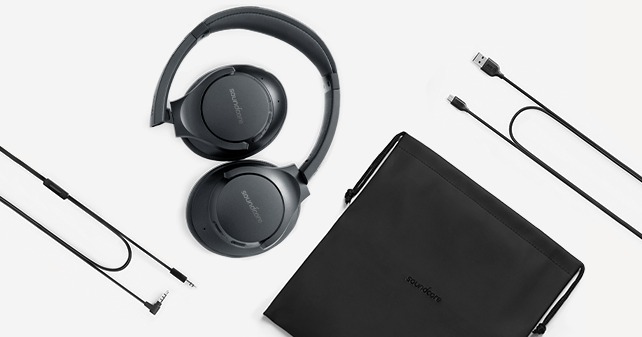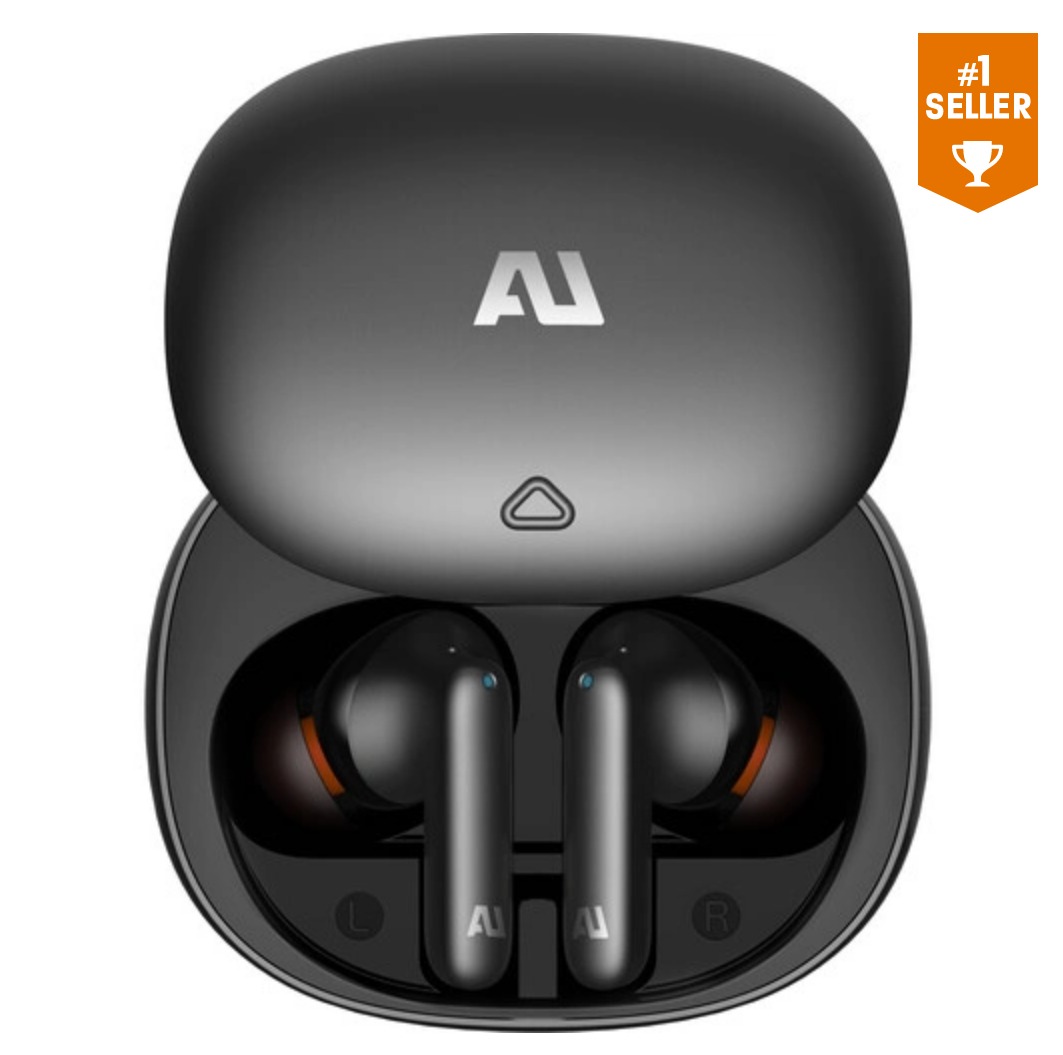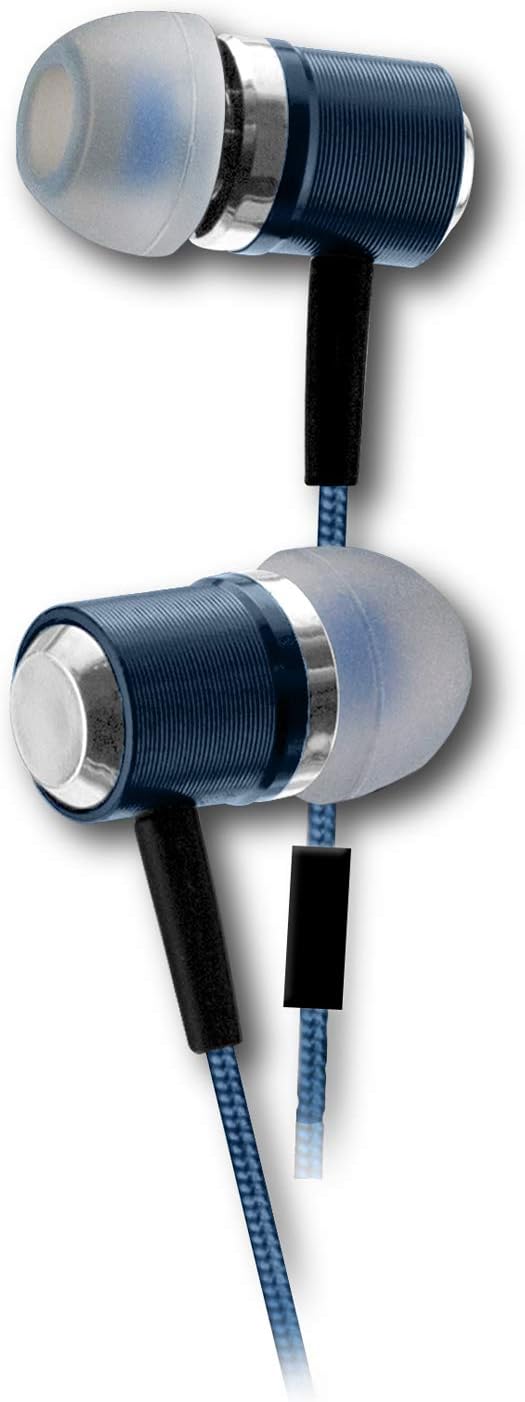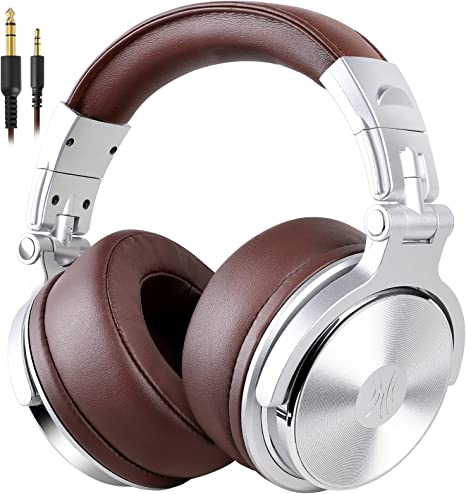Meyodody K9 Wireless Earbuds: The Surprising Science Inside Your Everyday Audio
Update on May 29, 2025, 3:05 p.m.
In the bustling rhythm of modern life, wireless earbuds have become less a luxury and more an essential conductor of our personal soundtracks. We rely on them to deliver a motivating beat during a morning run, to bring clarity to a crucial call on a busy street, or to weave a cocoon of calm with a favorite podcast during the evening commute. Yet, faced with a seemingly endless torrent of options, how do we discern genuine value? How do we peek behind the curtain of marketing jargon to understand what truly powers these tiny titans of audio?
Often, the answer lies in understanding the technology itself. Today, we’ll embark on such a journey, using the Meyodody K9 Wireless Earbuds as our “specimen.” This isn’t a review in the traditional sense, but rather an exploration—a chance to unravel the science and engineering principles that enable even budget-friendly devices to deliver a surprisingly sophisticated experience. By understanding the “how” and “why” behind their features, we not only appreciate the K9s more but also become savvier navigators of the entire tech landscape.

The Invisible Handshake: Bluetooth 5.3 and the Dance of Data
At the core of any wireless experience is the connection itself, and for the Meyodody K9, this is orchestrated by Bluetooth 5.3. Now, the term “Bluetooth” might be commonplace, but its origin story is surprisingly noble. It’s named after Harald Bluetooth, a 10th-century Danish king famed for uniting disparate Danish tribes. Similarly, the Bluetooth technology we know today was conceived to unite different devices seamlessly.
So, what advancements does version 5.3 bring to this digital diplomacy? Think of it as upgrading from a sometimes-crackly, easily interrupted phone call to a crystal-clear, robust conversation. Bluetooth 5.3 is engineered for:
- Enhanced Stability: It incorporates improved mechanisms for “channel classification,” which means the earbuds are smarter at finding and sticking to the clearest communication pathways, minimizing interference from other wireless devices. This translates to fewer frustrating dropouts when you’re absorbed in your audio.
- Improved Power Efficiency: Like a seasoned marathon runner conserving energy, Bluetooth 5.3 is designed to sip power more judiciously compared to its predecessors. For compact devices like earbuds, where every milliampere counts, this contributes significantly to longer listening times on a single charge. The K9’s ability to play for 6 hours continuously is partly thanks to this efficiency.
The Meyodody K9 also boasts “One-Step Pairing.” Imagine this as an instant, polite digital handshake. After you’ve introduced the earbuds to your phone or device for the first time (by selecting “K9” in the Bluetooth menu, as the product information guides), they remember their acquaintance. Subsequently, just opening the charging case prompts them to quickly re-establish that connection. This is achieved by the earbuds broadcasting their availability and your device recognizing and accepting the connection, all happening in the blink of an eye. For you, this means less time fiddling with settings and more time enjoying your content.

Crafting Worlds of Sound: The 13mm Driver – Your Personal Orchestra
The promise of “Superior Stereo Sound Quality,” as highlighted in the K9’s description, largely hinges on the performance of its 13mm speaker drivers. But what exactly is a driver, and how does its size impact what you hear?
Think of a speaker driver as a miniature, precision-engineered musical instrument. Its fundamental job is to convert electrical audio signals sent from your device into the physical sound waves that your eardrums perceive. The key components are a diaphragm (a thin, flexible membrane), a voice coil (a coil of wire attached to the diaphragm), and a magnet. When the electrical audio signal flows through the voice coil, it creates a fluctuating magnetic field that interacts with the permanent magnet. This interaction causes the voice coil—and thus the diaphragm—to vibrate rapidly. These vibrations push and pull the air, creating pressure waves, which are the sound waves we hear.
The “13mm” refers to the diameter of this diaphragm. Generally speaking, a larger diaphragm has more surface area, allowing it to move a greater volume of air. This can be particularly beneficial for reproducing lower frequencies, or bass, which require more significant air displacement to be perceived with fullness and impact. It’s akin to the difference between a large bass drum and a small snare drum; the bass drum, with its larger head, produces much deeper, more resonant tones.
However, driver size is just one part of the acoustic equation. The materials used for the diaphragm, the design of the earbud casing, and, crucially, the “tuning” of the driver play equally vital roles. Tuning is an art and a science, where engineers meticulously adjust the driver’s response across different frequencies to achieve a specific sound signature—perhaps one that emphasizes clarity in vocals, delivers thumping bass, or strives for a balanced, natural representation of the music. The K9’s built-in dual microphones, mentioned for call clarity, also play a part in its overall audio system, though their primary role is capturing your voice.
For the listener, a well-implemented 13mm driver, as aimed for in the K9, holds the potential for a more dynamic and immersive listening experience, capable of rendering both the subtle nuances of an acoustic guitar and the energetic punch of electronic music with greater authority than smaller counterparts.

The Unseen Marathon: 30 Hours of Power & The Wireless Future
In our always-on world, battery life is a make-or-break feature. The Meyodody K9 earbuds impress with a claimed total playback time of 30 hours. This isn’t magic; it’s a clever synergy between the earbuds themselves and their portable charging case. The earbuds alone offer up to 6 hours of continuous playtime (after a 1.5 to 2-hour charge), as stated in their specifications. When their energy dips, they nestle back into the charging case, which acts as a pocket-sized power bank, capable of replenishing them 3-4 times for an additional 24 hours of use.
The silent workhorse behind this endurance is the lithium-ion (Li-ion) battery, a technology that revolutionized portable electronics due to its remarkable energy density (packing a lot of power into a small space) and its ability to be recharged hundreds of times. Both the earbuds and the case contain these Li-ion cells, with the case obviously housing a larger capacity one.
Adding to this power narrative is the convenience of modern charging methods supported by the K9 case:
- Wireless Charging: This feels almost like magic. Simply placing the K9’s case on a compatible wireless charging pad initiates the flow of energy. The science behind it is electromagnetic induction, a principle discovered by Michael Faraday in the 19th century. A coil in the charging pad generates an alternating magnetic field, which, in turn, induces an electrical current in a corresponding coil within the earbud case, charging its battery – no cables required between pad and case.
- USB Type-C Charging: For wired charging, the K9 employs the ubiquitous USB Type-C port. This modern standard is favored for its reversible connector (no more fumbling to plug it in the right way) and its general support for faster charging speeds and data transfer compared to older USB types. The product notes a charging voltage of 5V/0.5A for the system.
To keep you informed, the K9’s charging case features an LED Power Display. This smart digital screen provides an at-a-glance indication of the case’s remaining battery percentage, taking the guesswork out of when it’s time to recharge the entire system. It’s your personal fuel gauge, ensuring you’re not caught enerji-short at an inconvenient moment. This entire power ecosystem is designed to give you days, not just hours, of listening freedom.

Weathering the Storm: What IPX5 Water Resistance Really Means
Life is unpredictable, and sometimes it gets a little wet. Whether you’re caught in an unexpected downpour during your commute or working up a serious sweat at the gym, you want your earbuds to keep pace. The Meyodody K9 earbuds come with an IPX5 waterproof rating, a specification that offers a tangible level of protection.
But what do these letters and numbers actually mean? “IP” stands for “Ingress Protection,” and it’s an international standard (IEC 60529) used to classify how well an electrical enclosure (like an earbud casing) resists intrusion from foreign objects (like dust) and moisture.
Let’s break down IPX5:
- The first digit after “IP” indicates protection against solid particles (dust). The “X” here means the device hasn’t been officially rated for dust ingress, or the manufacturer chose not to test or specify for it. This is common for earbuds primarily focused on moisture resistance.
- The second digit, “5” in this case, signifies the level of protection against liquids. An IPX5 rating means the earbuds are protected against low-pressure water jets projected by a nozzle (6.3mm) from any direction for at least 3 minutes.
In practical, everyday terms, IPX5 means the K9 earbuds can comfortably handle sweat during your most intense workouts. They can shrug off light to moderate rain, so you don’t have to panic if the weather turns. The product description mentions a “nano-coating on earbuds surface,” which is a common and effective technique. These coatings are microscopically thin layers that create a hydrophobic (water-repellent) surface, causing water to bead up and roll off, much like water on a lotus leaf, rather than seeping into sensitive electronics.
It’s crucial, however, to understand the limits. IPX5 does not mean the earbuds are fully waterproof or suitable for swimming or submersion in water. But for the common encounters with moisture in an active lifestyle, it provides a valuable layer of resilience and peace of mind.
The Art of a Good Fit & Effortless Control: Ergonomics and Interaction
Beyond the internal technology, the physical interaction with earbuds profoundly impacts the user experience. The Meyodody K9 earbuds are described as featuring an “ergonomic design” and weighing a mere 4 grams each. This is where science meets comfort.
Ergonomics, in this context, is the science of designing products to fit the human body optimally, minimizing discomfort and maximizing efficiency. For in-ear devices, this involves shaping the earbud to conform to the general contours of the human ear canal and concha (the outer bowl-shaped part of the ear). A good ergonomic design aims for a secure fit that doesn’t easily fall out during movement, and distributes pressure evenly to avoid soreness during extended listening sessions. The feather-light 4-gram weight per earbud is significant; lighter earbuds generally translate to less ear fatigue over hours of use.
However, human ears are wonderfully diverse in shape and size. While manufacturers use anthropometric data (measurements of the human body) to create designs that suit a broad audience, a “perfect” universal fit is an elusive goal. This is reflected in the user feedback from the provided product information, where some users praised the fit, while others found the earpieces “really big” or causing discomfort after a while (“Son grandes para mi oido,” “Son incómodos para los oidos”). This variance is a common reality in the world of in-ear audio and underscores the personal nature of comfort.
Interacting with your audio and calls is managed via “Easy Touch Control.” The K9s utilize physical buttons (as inferred from “With physical button on the wireless headphones, you can switch songs freely, answer/reject calls and activate Siri”). These offer tactile feedback, which some users prefer over touch-sensitive surfaces that can sometimes be accidentally triggered. These controls allow you to manage playback, handle calls, and summon your phone’s voice assistant without needing to constantly reach for your device – a small convenience that adds up to a smoother daily experience.

Beyond the Spec Sheet: The Real Value in Understanding Your Tech
As we’ve journeyed through the Meyodody K9’s key features, it becomes clear that even an affordably priced pair of wireless earbuds is a marvel of miniaturized technology. From the intricacies of Bluetooth 5.3 ensuring a stable stream of your favorite tunes, to the 13mm drivers diligently converting electrical pulses into audible soundscapes, the long-lasting battery keeping the music playing, the IPX5 rating guarding against the elements, and the ergonomic considerations for comfort – each aspect is a testament to considerable scientific and engineering effort.
The Meyodody K9, with its LED power display, support for both wireless and USB Type-C charging, and lightweight design, isn’t just a collection of specifications listed on a webpage (ASIN B09D3KSSD4, first available August 20, 2021, according to the provided data). It represents the democratization of technology. Features that might have been exclusive to premium, high-priced devices just a few years ago are now increasingly accessible to a wider audience. Understanding the principles behind these features—the science of Bluetooth, the physics of sound reproduction, the chemistry of batteries, the standards of ingress protection—empowers you as a consumer. It allows you to look beyond marketing buzzwords and make informed choices based on what truly matters for your needs and how well a device implements these foundational technologies.

Concluding Thoughts: The Silent Soundtrack to Progress
The Meyodody K9 Wireless Earbuds, like so many of the gadgets that seamlessly integrate into our lives, are more than just tools. They are small, accessible windows into the vast and fascinating world of applied science and engineering. The convenience of one-step pairing, the pleasure of clear audio, the freedom of long battery life – these are not accidental; they are the results of decades of research, innovation, and refinement.
As technology continues its relentless march forward, may our curiosity about the “how” and “why” behind it also grow. For in understanding the silent symphony of processes occurring within these everyday objects, we not only become more discerning users but also gain a deeper appreciation for the ingenuity that constantly shapes and reshapes our world, one beat, one connection, one charge at a time.



























































